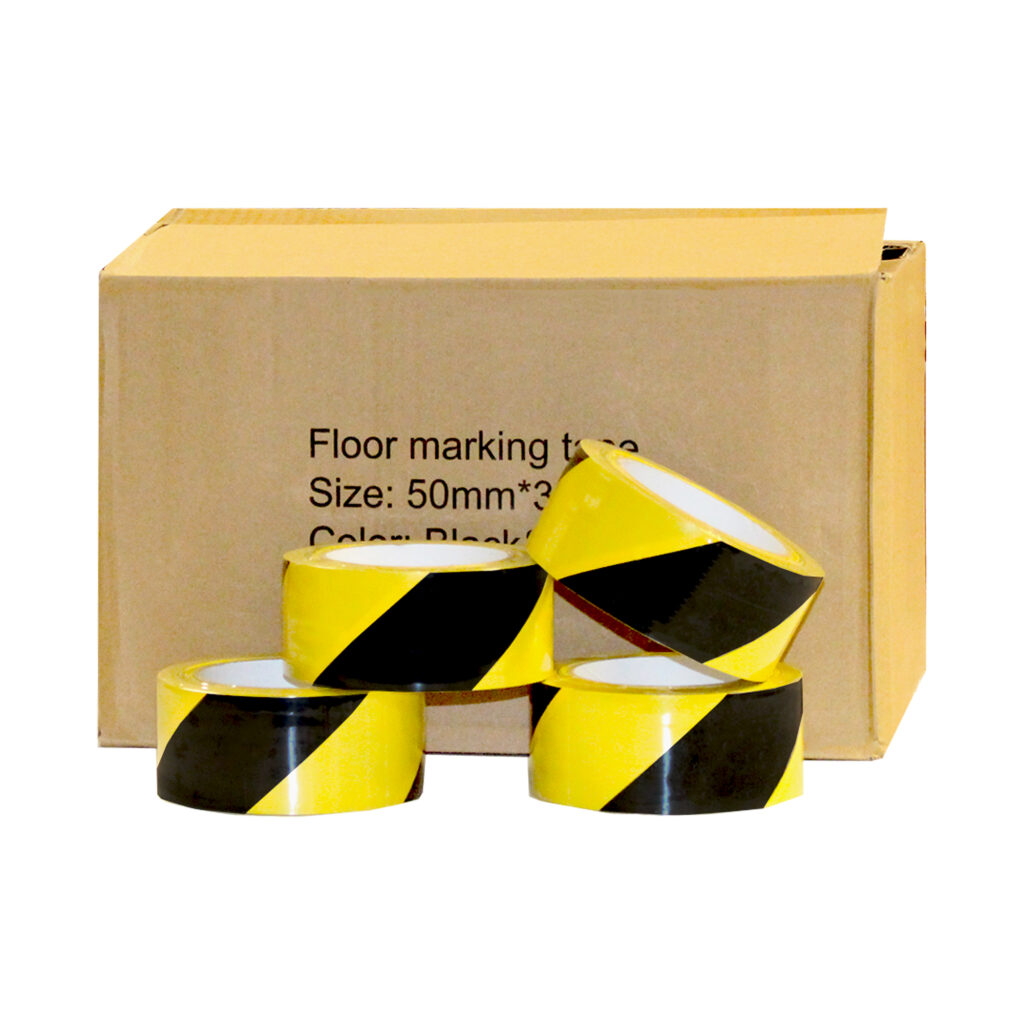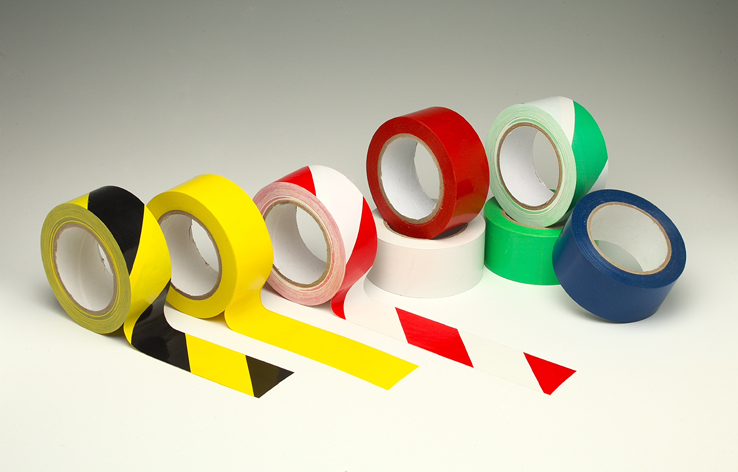Floor marking tape might not be something you think you need in your workplace, however, it can be vital for the safety of your space. Read on to find out why, and where you can buy this essential floor marking tape.

Selecting the correct floor marking tape can help you to delineate different areas of your workplace. This is especially important if you work in a factory setting, where some areas involve driving or heavy machinery, and some areas need to be workspaces or even walkways.
Separating these areas with the correct floor marking tape can help to prevent people from accidentally wandering into areas that they should not be in. This can help to reduce the number of accidents that may occur due to this.
Beaverswood Supply Co offers a range of floor marking tape in 50mm wide and 33M long, in different colours to suit your space. But what colour should you use for which area of your workplace?
Yellow
Yellow tape can be used on the floors around areas that are being used as aisleways or traffic lanes. You may also utilise yellow tape in areas where work cells are present. While you would not generally use yellow tape to indicate danger, it is a useful colour for indicating traffic, as it is bright and has high visibility for both pedestrians and those in vehicles.
Black/yellow
Black and yellow tape is suitable for use in areas where there may be health or physical hazards to employees. This is one of the most important types of tape to have on hand in areas where you have heavy machinery or chemicals, as it alerts employees to either stay back or be properly equipped to cross the line.
White
White tape can be more generally used and is often used on stairways or in other areas to show fixtures and/or equipment that is not colour coded under any of the other colour categories. This could include workstations where there are no health or physical hazards, carts, displays and racks. This tape is used to highlight the area rather than warn against entry.
Green/white
A combination of green and white tape is often used to mark exclusion zones but does not necessarily indicate hazardous materials. It may simply be indicating the presence of materials that should be avoided and/or treated with care. It may also delineate one workstation from another to create workplace clarity.
Red
Floor marking tape in red is commonly used in areas working with metal or other materials that might produce scrap or defective materials. It indicates these, as well as rework and red tag areas. This makes it extremely useful for factory environments.
Red/white
Red and white striped floor marking tape is also important, as it can indicate areas that should be kept clear. The reason for this is both safety and compliance, as shown by the red and white stripes. Areas, where this tape may be used, include safety equipment or electrical panels that may be dangerous or need to be accessed quickly. It warns employees not to linger in these areas or set up any work equipment there.
Blue
Blue floor marking tape is another tape often used in factory settings to indicate that there are raw materials present, works in progress, and there may be finished goods present. It shows that employees should demonstrate care in these areas, and be mindful of the materials present.

As you can see, using the correct floor marking tape can be vital for making your workplace safe and productive, giving employees a clear view of where certain activities take place, and where they should avoid. Floor marking tape can even help your workplace to be more compliant when it comes to health and safety, as long as everyone understands what each colour means. Be clear with your employees on this.
While you can buy floor marking tape in a range of supply stores, turn to Beaverswood for the toughest and most durable self-adhesive tape in every colour you might need. View the range to choose the correct tape for you and to add clarity and security to your workplace.




